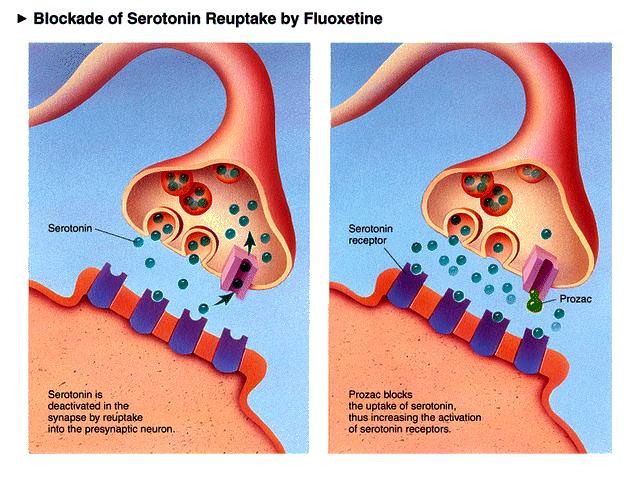

Serotonin (5HT) is a neurotransmitter which is involved in many behaviors; as examples:
(a)Human mood disorders (depressions) are effectively treated with drugs which specifically block the reuptake of serotonin into the presynaptic axon terminal, for example fluoxetine (Prozac). The resultant enhanced serotonin activation brings about a cascade of events ultimately resulting in a reduced sensitivity of presynaptic autoreceptors for serotonin and reduced serotonin synthesis. This suggests that neurotransmitter dysregulation may be involved in depressive disorders.
(b)Human OCD (Obsessive Compulsive Disorder) is effectively treated by serotonin reuptake inhibitors suggesting that this condition may also be due to dysregulation in serotonin synapses.
(c) Hunger or appetite is reduced by drugs which elevate serotonin levels in the brain (e.g. fenfluramine/Pondimin or dexfenfluramine/Redux) making these drugs popular in the treatment of obesity. Drugs which have the opposite effect, that is they reduce serotonin levels, produce an increase in carbohydrate craving and intake. While the relationship is a very complex one, we believe that serotonin is involved in regulating appetite and hunger.
(d)Human violence, aggressive behaviors, and suicide have all been associated with reduced levels of serotonin in the brain.
(e)Sleep onset latency is reduced with tryptophan which is the amino acid needed by the brain for the synthesis of serotonin. This finding suggests that serotonin may play a role in sleep induction. Grandmother's suggestion to drink a glass of warm milk before sleep may be sound, since milk is a good source of tryptophan.
The below pictures give an indication of how serotonin works.

 Top of page
Top of page